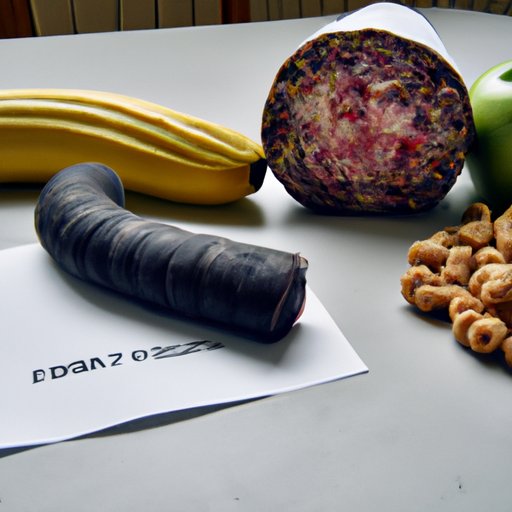Introduction
Colonoscopy is an important medical procedure that allows a doctor to examine the interior lining of the large intestine or colon. It is used to detect any abnormalities or diseases such as colorectal cancer. Prior to the procedure, patients are required to follow certain instructions, including a low fiber diet. In this article, we will explore why a low fiber diet is recommended before a colonoscopy, the benefits of following this type of diet, and tips on how to adhere to it.

Exploring the Benefits of a Low Fiber Diet Prior to Colonoscopy
A low fiber diet prior to a colonoscopy can have several positive effects. Firstly, it can help make the entire colonoscopy experience more comfortable for the patient. By reducing the amount of dietary fiber, the patient will be less likely to experience bloating and discomfort during the procedure. Secondly, it can improve visualization of the colon. Dietary fiber can accumulate in the colon and obscure the view of the doctor. With a low fiber diet, the walls of the colon can be clearly seen and any abnormalities or diseases can be detected more easily. Finally, reducing the amount of dietary fiber can reduce the risk of complications during the procedure. High fiber foods can cause gas buildup which can make it difficult for the doctor to maneuver the endoscope through the colon.
Is a Low Fiber Diet Necessary Before a Colonoscopy?
It is important to understand that a low fiber diet before a colonoscopy is not necessary for everyone. Factors such as age, health condition, and other medications may influence whether or not a low fiber diet is recommended. It is best to discuss this with your doctor to determine if a low fiber diet is right for you. Furthermore, it is important to consider the pros and cons of a low fiber diet before committing to it. While it can improve visualization of the colon and reduce the risk of complications, it can also lead to constipation and dehydration.

The Reasons Why a Low Fiber Diet is Recommended Before a Colonoscopy
A low fiber diet is recommended before a colonoscopy for three main reasons. Firstly, it helps clear the bowel of debris. Dietary fiber can accumulate in the colon and obscure the view of the doctor. By reducing the amount of dietary fiber, the walls of the colon can be clearly seen and any abnormalities or diseases can be detected more easily. Secondly, it allows for better visualization of the colon. High fiber foods can cause gas buildup which can make it difficult for the doctor to maneuver the endoscope through the colon. Finally, it minimizes the risk of complications during the procedure. By reducing the amount of dietary fiber, the patient will be less likely to experience bloating and discomfort during the procedure.
Preparing for a Colonoscopy: What You Need to Know About Low Fiber Diets
When preparing for a colonoscopy, there are certain types of foods that should be avoided in order to maintain a low fiber diet. Foods that are high in fiber such as legumes, whole grains, nuts, seeds, and certain fruits and vegetables should be avoided. Additionally, processed and fried foods should also be avoided. Instead, focus on eating lean proteins, low-fat dairy products, and cooked vegetables. It is also important to drink plenty of fluids to prevent dehydration. Lastly, it is helpful to keep a food diary so that you can track your intake and ensure that you are adhering to a low fiber diet.
Conclusion
In conclusion, a low fiber diet prior to a colonoscopy can have several positive effects. It can enhance the patient’s experience, improve visualization of the colon, and reduce the risk of complications. However, it is important to understand the pros and cons of a low fiber diet before committing to it. When preparing for a colonoscopy, it is important to avoid foods that are high in fiber, and focus on eating lean proteins, low-fat dairy products, and cooked vegetables. Lastly, it is helpful to keep a food diary to track your intake and ensure that you are adhering to a low fiber diet.
(Note: Is this article not meeting your expectations? Do you have knowledge or insights to share? Unlock new opportunities and expand your reach by joining our authors team. Click Registration to join us and share your expertise with our readers.)
